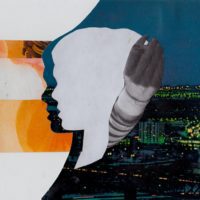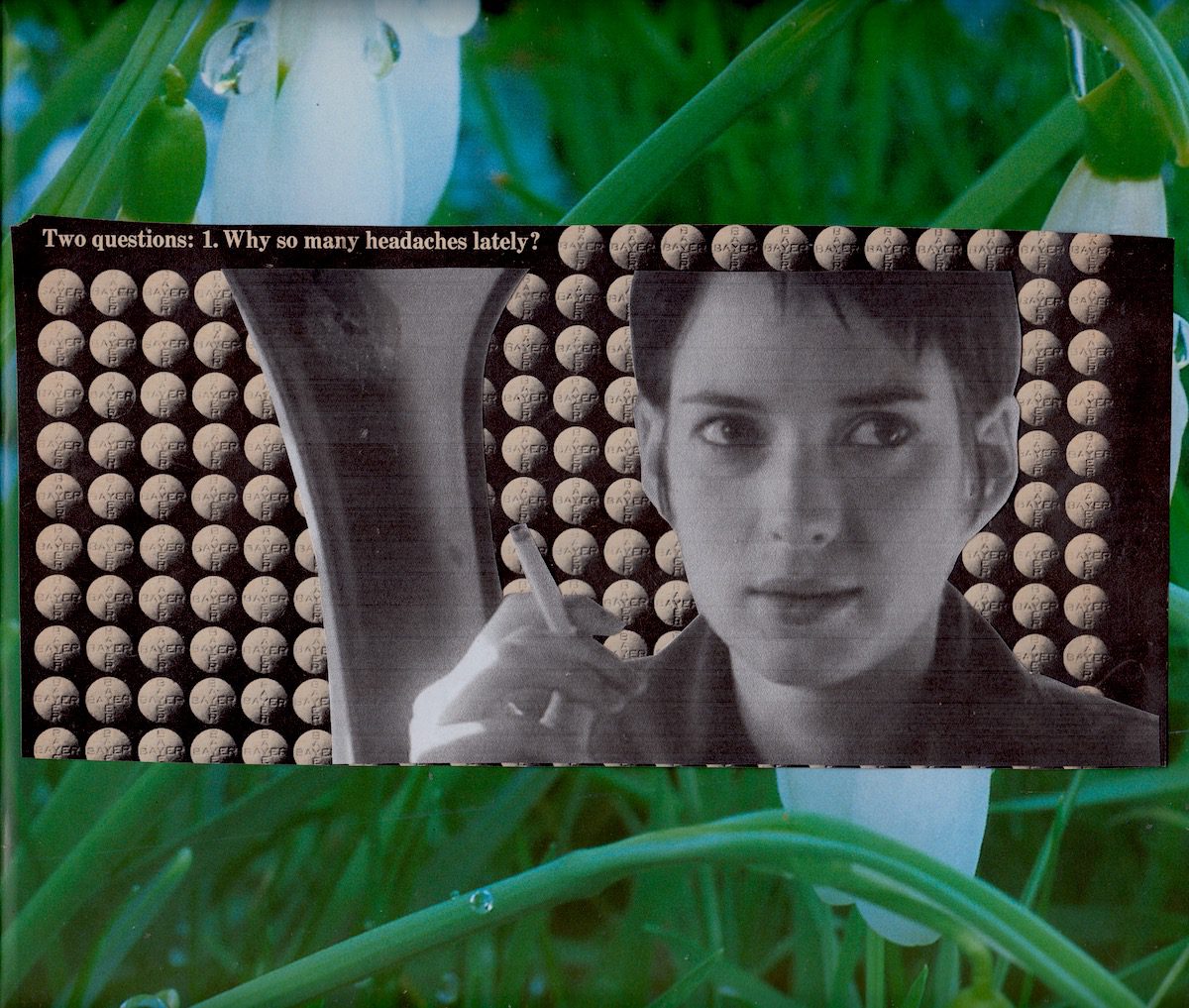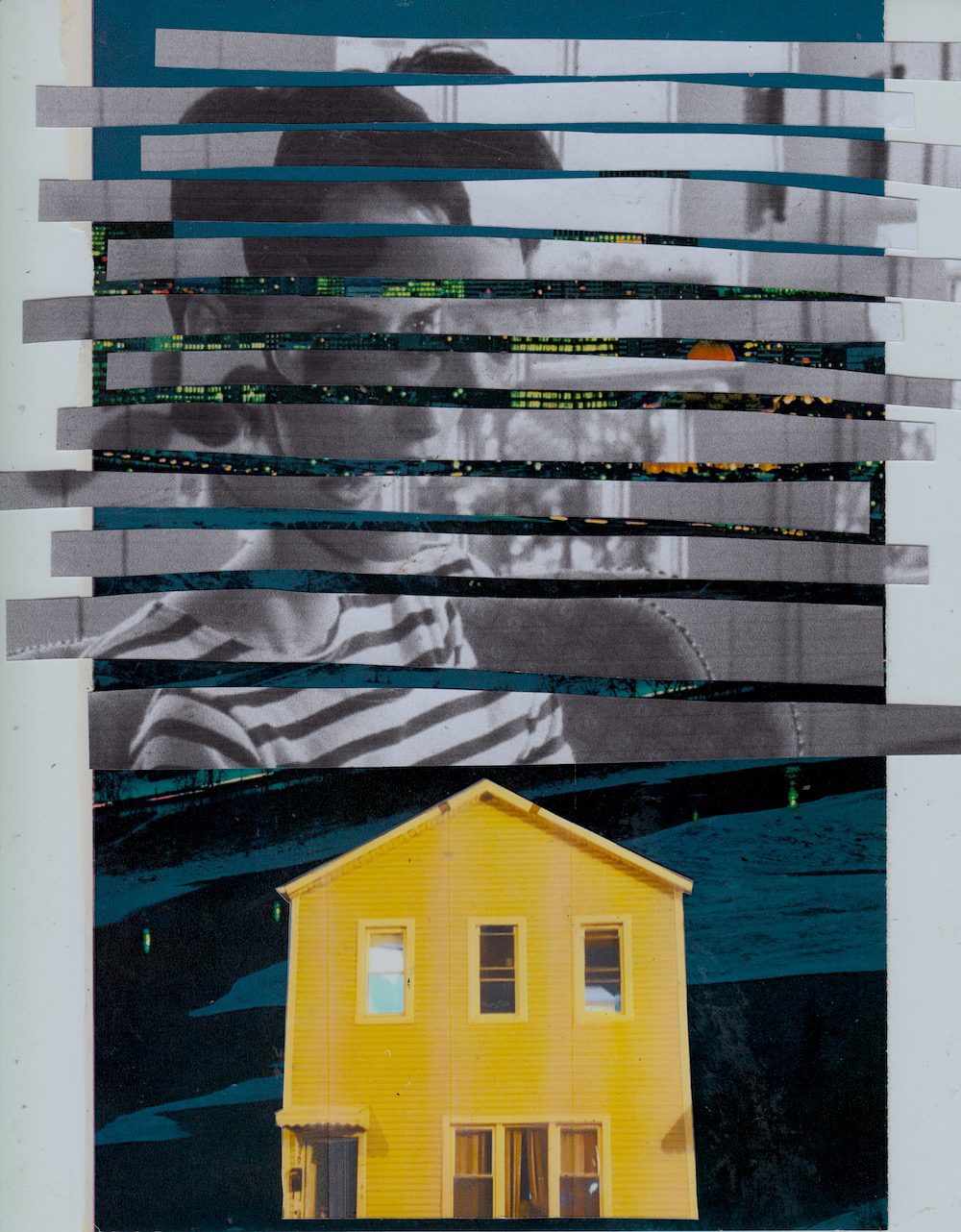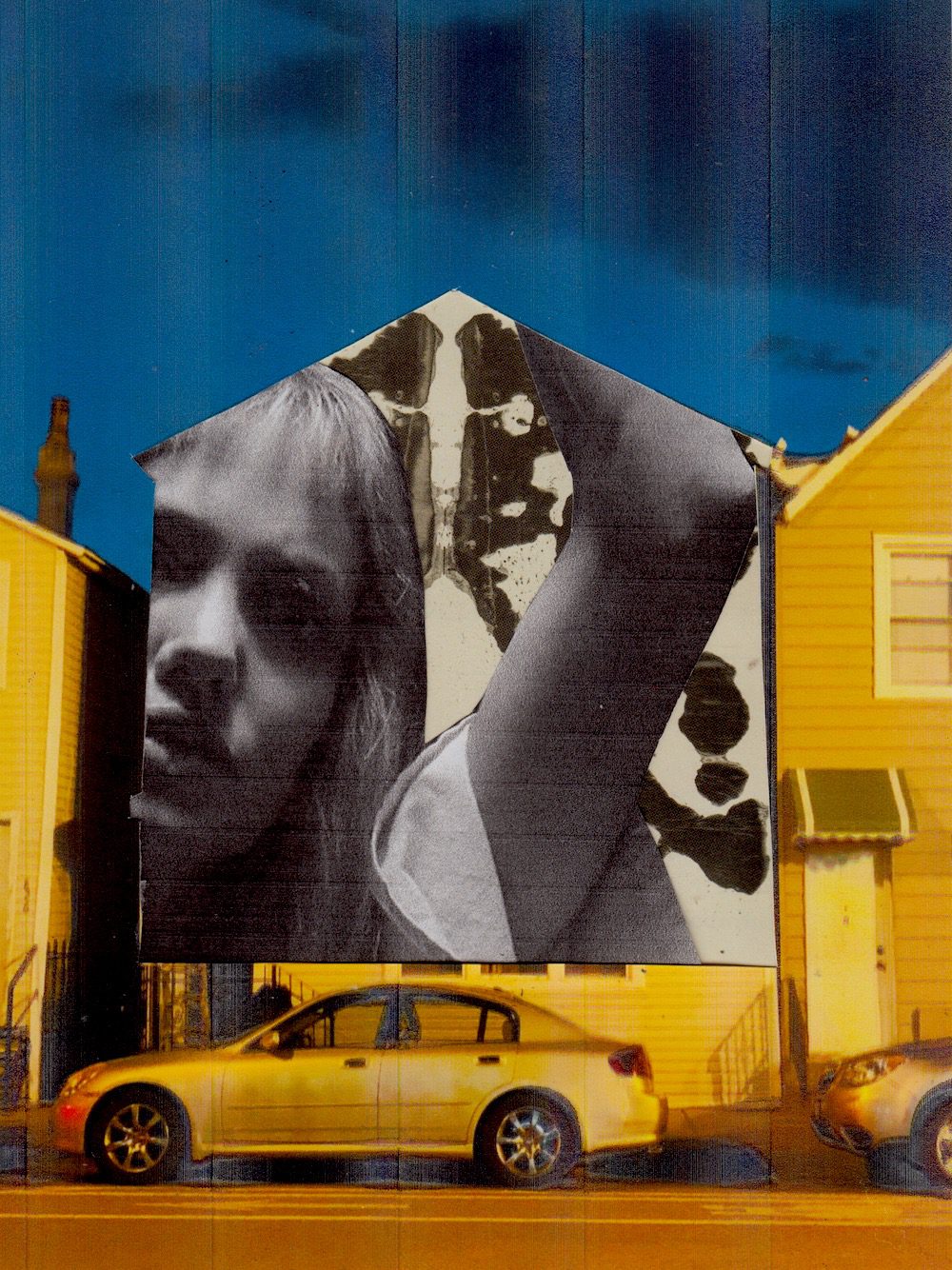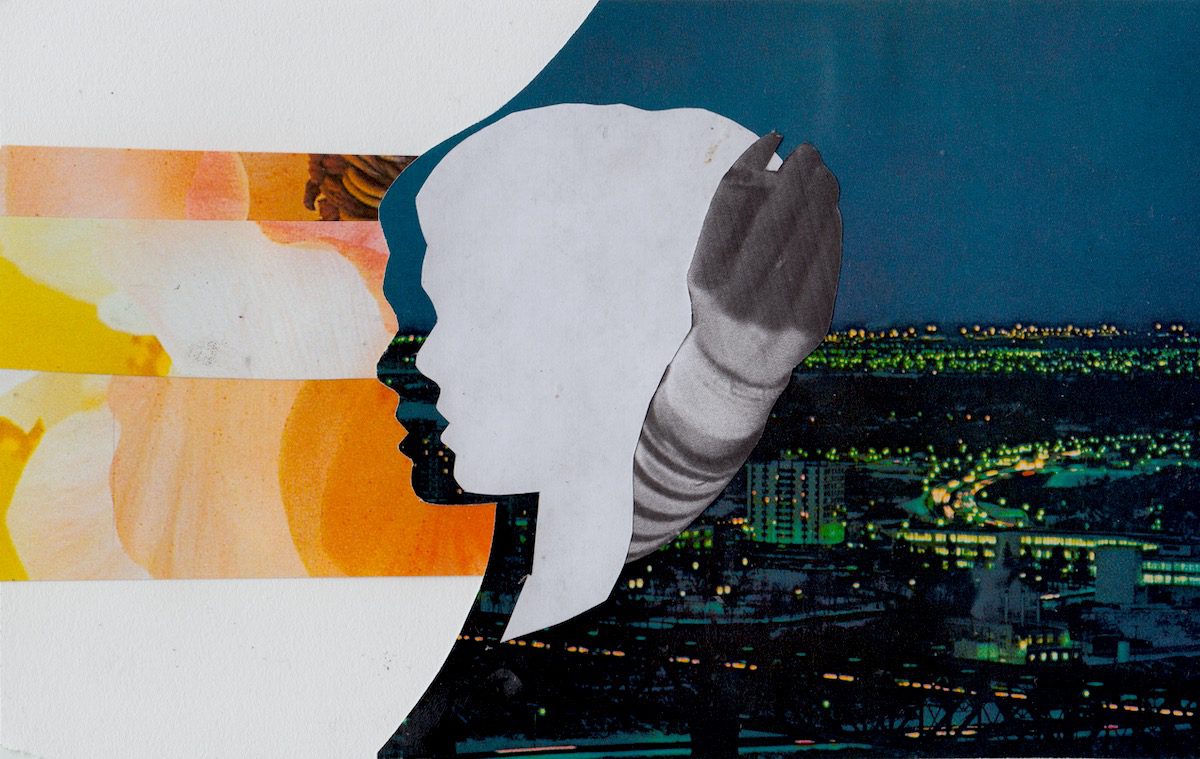My Lyft ride home from work was always the same tour of things I’d long forgotten. I lived in Hackensack for a few short years as a child, but barely recognized it as an adult. Night after night, I took the same trip through a funhouse mirror of sites that should’ve sparked a kindling of familiarity in me; we passed the Aldi that felt out of place, and newly constructed condominiums sure to be beyond the means of the working-class Black and brown families who called the town home. My driver this time was nice enough; remnants of his Caribbean accent lingered as we made small talk on our way down a dark road into Teaneck. He glanced at me in the rearview mirror.
“Are you from around here?” he asked. I shook my head, but he was intrigued. “Oh, where are you from?” he pressed.
My throat tightened and my lungs started to burn. I wondered if I’d disintegrate into ashes right then and there. After a few seconds of awkward silence, I mumbled, “Brooklyn.”
I felt like a fraud. I couldn’t remember a time where I existed in the city where I was born. I couldn’t recall any of the many places I lived, for that matter. I’ve been everywhere, but I don’t belong anywhere.
“Sometimes it’s hard for me to stay in one place,” Susanna Kaysen slurs after a nurse pulls a tube from her throat. The emergency room buzzes around her while medical personnel work frantically to save her from the mixture of aspirin and vodka rotting through her insides. Doctors inspect her body, finding evidence of self-harm. They implore her to explain why she would do such a thing. Before she can answer them, the scene ends; next, she’s sitting down in the home of her father’s friend, a psychiatrist named Mr. Crumble.
“Are you stoned? Do you smoke pot? Take LSD?” he asks.
She says no. “I don’t know what I’m feeling,” she tries to explain.
“You’re hurting everyone around you,” he scolds. She wilts under the weight of his condemnation.
The first act of Girl, Interrupted plays out in nonlinear match cuts. Scenes bleed into one another as Susanna, played by Winona Ryder, tries to piece together the events that led her to the hospital that night. In quick succession, the film shifts from the emergency room, to Mr. Crumble’s office, to her family home for her father’s birthday party, and to her first days in a ward at Claymoore Psychiatric Hospital. The effect is an unsettling, dizzying whirlwind; Susanna has no idea where she belongs and just when it seems she’s found some footing, we’re in an entirely different space with her.
Usually, when I tell someone that Girl, Interrupted is my favorite film, I’m met with a touch of incredulity. It’s not a film most self-proclaimed cinephiles hold in high regard: it’s a tad melodramatic, the third act stumbles a bit, and it takes one too many liberties with its source material. Girl, Interrupted, based on the memoir of the same name by Susanna Kaysen, was released on a limited scale in 1999, followed by a wide release in early 2000. The film stars a who’s-who of Hollywood heavyweights including Ryder pre-shoplifting scandal and Angelina Jolie pre-Billy Bob Thornton, plus Whoopi Goldberg, Elizabeth Moss, Clea Duvall, Vanessa Redgrave, and Brittany Murphy. While the narrative is centered around Susanna during her institutionalization, we meet and learn about the other women in her psych ward and their real and embellished afflictions.
The film has mostly faded into the doldrums of 90s pop culture fare but remains notable for the Oscar win that launched Jolie into the upper echelon of stardom and the author’s unreserved denunciation of the liberties director James Mangold took in adapting her memoir for the screen.
“I guess whatever that book is, it just has nothing to do with me anymore… It has become something else, and it doesn’t belong to me,” Kaysen lamented years later in an interview with the Paris Review.
“I want to go home,” I said. The children’s therapist scribbled something on her notepad and tilted her head sideways ever so slightly, to convey sympathy.
“Do you not feel at home?” she asked.
There was no such place. I moved back in with my biological mother following some time in foster care. I was “home,” but I couldn’t suppress the agitation that overwhelmed me. My mother had been drug-free for two years at that point, but I still spent every day wondering if it was going to stick. Every minute was consumed by worry. Everything I knew as real might be taken away from me in an instant, again.
My twelve-year-old mind wasn’t built to endure this type of stress. My therapy sessions always ended before I could find the words to describe the way I felt.
I was so overcome with bouts of panic that I couldn’t function the way normal preteens did. I tried but failed miserably each time. My sense of splintering apart only worsened around kids my age. I didn’t recognize myself in them. They were just reminders of everything I’d already lost and the commonalities we didn’t share. “She’s a smart girl, but…” became a common refrain for all of the medical professionals making suggestions to my mother of how to fix me. Eventually, they decided that public school—a “mainstream school setting”—would be too much for me. Luckily, one of the foremost hospitals in my state offered an alternative: a program designed for “emotionally disturbed” children like me. Instead of a school with classes, I’d go to intensive one-on-one and group therapy sessions, with a couple of hours of independent study sprinkled throughout each day. I’d spend my days relearning how to be a person. Once I developed more effective coping methods for my generalized anxiety disorder, we could revisit integrating me.
Dare a child like me be allowed to exist amongst normal adolescents. Dare I infect them with my brokenness.
In Girl, Interrupted, Claymoore is a mental institution and a means for secluding the banished. Many of its inmates exist outside the margins of societal expectations as dictated by patriarchal values, unwilling to be a dutiful daughter, doting mother, or a docile wife. Women who resist these roles have always been othered. If you’re othered enough, it’s only a matter of time before you cave into yourself. For Susanna, her otherness looms over her like a guillotine. She’s the only senior in her graduating class that isn’t going to college. She knows she wants to be a writer, but she has no idea how to make this happen. Although life rarely plays out the way we think it will when we’re teenagers, the people around Susanna see her indirection as alien and so they treat her as such. Some believe that this type of pathologization is antiquated in modern society—that conflating common growing pains with mental illness as a way of enforcing assimilation is something that happened in the very distant past. My own experience shows that while strides have been made toward better understanding mental health, the inclination to separate and isolate otherness still remains. Aside from the immediate aftermath of her suicide attempt, less emphasis is placed on Susanna’s diagnosis; instead, she’s encouraged to force herself into a mold that wasn’t made for her.
The other women in Claymoore are subjected to the same treatment. Each character is struggling for acceptance and is in need of an escape. They become a makeshift family for one another, offering support in times of distress and kindness in place of ostracism. While they do suffer from varying forms of mental illness, their issues are exacerbated by a fear of rejection. Polly (Moss) worries that the facial scars from her burns have rendered her unlovable. Cynthia (Jillian Armenante) is a butch lesbian who’s been shunned by her family. The trauma of Daisy’s (Murphy) sexual abuse at the hands of her father has manifested in obsessive-compulsive disorder, self-harm, and bulimia.
Lisa (Jolie) has been a resident at Claymoore since she was a young child. She’s labeled a sociopath and presented as a villain, but her behavior suggests a deeper inner turmoil. At times, she is callous and manipulative, but she shows genuine care toward the other patients. Lisa hones in on Susanna’s listlessness and works to create an environment where she feels she has a place. When Susanna’s parents visit the facility for a family therapy session that goes off the rails, Lisa leads an escape into the tunnels of the hospital where there’s a makeshift bowling alley. Lisa orchestrates a break-in into Dr. Wick’s office to let Susanna see her medical records. When the wife of a man Susanna had an affair with confronts and berates her during the group’s ice cream outing, Lisa springs to her defense. Lisa is the one who tries to stop Nurse Margie’s invasive room checks so that Susanna can send a boyfriend off to Vietnam properly. Lisa is a safe cocoon that Susanna wraps herself in. She only becomes dangerous after Daisy is released from Claymoore; Susanna will soon follow suit. Lisa fears nothing except being alone, and crumbles as she sees the people she protected abandoning her.
I can’t recall the first time I watched Girl, Interrupted. It was released the same year I was admitted into the program at Hackensack University Medical Center. That year only comes to me in flashes now. I have snapshots of moments—like one of the counselors telling me that home doesn’t have to be a place, home can subsist within the memories we create—but most of the names and faces have dimmed. As I get older, I struggle to reassemble those memories. The harder I try to grasp them, the more they slip away. I’ve considered hypnosis. Once, I visited the building that housed the program. I already suspected that my records would long gone, since it had been well past the seven years they would be obligated to keep them, but I hoped being in that space again would trigger a memory. The hospital had rebranded and warped itself over the years. Walking through the halls felt like being lost in a cold, sterile maze. The program had been swallowed by corporate expansion, and so had my chances of getting answers about my life then.
What I do remember of my earliest viewings of Girl, Interrupted is the familiarity I felt in each frame. It was the first time I saw a story on screen resemble my own. The women of Claymoore were much like the emotionally disturbed adolescents in my program; we were all outsiders as much as we were troubled, thrown together into a patchwork support system. None of us had friends outside of each other. I’d grown especially close to two girls who were a few years older than me. We’d meet up on weekends to go to the mall or to each other’s homes for movie nights. We tried to give one another the normalcy we so desperately craved. I wish I knew what happened to them, if either of them got the happily-ever-after they deserved. As time has wiped those friends from my psyche, I often revisit Girl, Interrupted. It is still a comfort to me against the unknown.
Like Susanna, I left my program after a year. Eventually, I reintegrated into a mainstream school. Though my mental health remains a work in progress two decades years later, that time better prepared me to cope with issues instead of letting them drown me.
When Susanna is released from Claymoore, her chart reads recovered, but she’s not so sure. “Was I ever crazy?” she ponders. In the end, she acquiesces that she may never really understand her mental illness. Maybe nothing was ever wrong with her at all.
“Maybe,” she concedes, “maybe life is.” As Susanna piles into a taxi to go home, she comes face to face with the very same driver who dropped her off at Claymoore a year earlier. Their final exchange, albeit brief, is brighter than their first one. Susanna may not know what the future holds, but she has hope.
Like Susanna, my future is a mystery to me. The only thing I know with certainty is that there will be more Lyft rides. More awkward conversations with drivers I may never see again. More silent trips through a town that continues to shape-shift. More moments to figure out where exactly it is that I’m going and where I’m supposed to be, even if I can’t remember where I came from. Though my hope may have dimmed, I’d like to think at some point I’ll get another chance—that when the driver asks me where home is, I’ll be able to remember my answer.
***
Rumpus original art by Cyrus Finegan.
